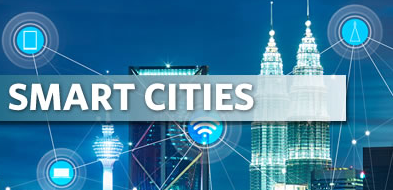5 Smart City Technologies For Cities, developing into a Smart City has its own challenges. Among them is about many people who migrate from living in remote areas to urban areas. For a real picture, big cities in Indonesia are subscribed to the invasion of new residents every time I return to Eid. For example, Jakarta and Surabaya have checked their population status.
5 Smart City Technologies For Cities In one study, by 2050 it is estimated that 86 percent of the population in developed countries will live in cities. While in developing countries the percentage is approximately 64 percent who live in cities. This is driven by the assumption that the city can improve the welfare of the population because of the opening of job opportunities.

Summarizes 5 Smart City Technologies that Make for cities that can save city resources. Check the list below.
- Smart Energy
This system will monitor and control energy use to a more efficient handling level. In a release, Cisco estimates that cities that have comprehensive energy use information can increase efficiency levels by approximately 30 percent within 20 years. By using renewable energy sources, controlling water distribution, and having a waste management system, smart cities in Indonesia are able to reduce pollution while saving energy.
- Smart Mobility
This technology relates to more effective transportation options. Congestion is a problem in many big cities in the world. Many people, who spend most of their time on the road, are stuck in traffic. Of course this has the potential to increase levels of depression. Smart mobility technology is able to provide solutions so that traffic can run smoothly. This technology is also able to record vehicle movement patterns so that it can reduce the potential for road accidents. With optimal implementation, this will reduce the costs that must be incurred and of course more environmentally friendly. BRT technology is one example of technology that can be applied to smart mobility. BRT is a fast, convenient, safe and timely bus system of infrastructure, vehicles and schedules.
- Smart Infrastructure
Infrastructure plays a very important role in the realization of a smart city. With the use of the latest technology, cities as service providers can turn raw data into information that can be consumed by the public. In addition, various developments can be planned for future city implementation needs. In addition, this technology can analyze data recorded by sensors such as traffic patterns, as well as public tracking systems.
- Smart Public Services
Smart cities can connect residents and authorities with more innovative communication technologies. This technology will create a safer environment and raise the standard of living in cities. For example, residents can immediately report if there are culverts that are clogged and cause flooding so that the relevant parties can act as soon as possible. This kind of smart public service has been exemplified by DKI Jakarta with its rainbow troops.
- Smart Care
The more developed a city, the more complex the health needs that must be met. Smart care can provide quality services and reduce costs for patients. This technology can also provide health information for the general public.
Developing towards the smart city concept has a fairly heavy responsibility, especially in the environmental aspect. Therefore, the five technologies above are very important to handle existing resources more wisely. The latest technology is able to provide more efficient services, save costs, and improve the quality of life of the population.